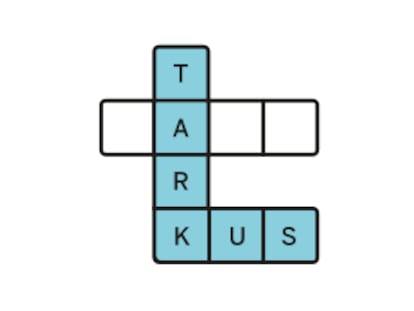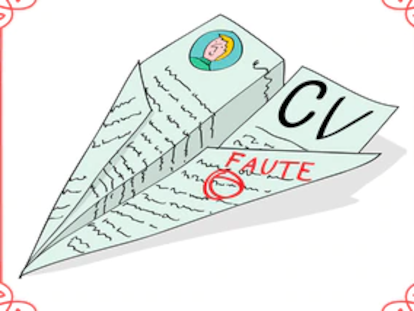Elon Musk’s legacy in Washington: Thousands laid off, a chainsaw, and fewer cuts than promised
The richest man in the world leaves his months at the helm of DOGE with insider knowledge of the very administration he was tasked with downsizing — and a reputational crisis for his companies that won’t be easy to repair
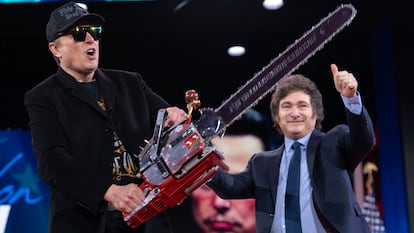

Elon Musk’s political death certificate arrived Wednesday night, Washington time, when the richest man in the world announced on his social network, X, that he was resigning from the mission for which Donald Trump had recruited him: dismantling the administration at the helm of a new Department of Government Efficiency (DOGE).
In reality, his farewell tour had begun much earlier, in late April, shortly after Trump completed the rite of passage of his first 100 days in office. At the time, Musk compared himself to an enlightened leader. “DOGE is a way of life, like Buddhism,” Musk said. “Is Buddha needed for Buddhism?”
On Tuesday, he reiterated his hope for a future in which the chainsaw to cut public spending can continue to roar with someone else at the helm. “The DOGE mission will only strengthen over time as it becomes a way of life throughout the government,” he wrote on X.
That, however, is far from guaranteed: the department was created by recruiting about 20 young engineers — some barely out of their teens—who, inspired by Silicon Valley and armed with an iconoclastic spirit, stormed federal agencies one after another to uncover secrets, enforce cuts, and fire tens of thousands of public employees. Their guide was Musk himself, who had tested this shock therapy in some of his own companies — including, besides X, aerospace company SpaceX and electric carmaker Tesla — so it remains unclear who will lead them now.
For the moment, Musk’s right hand at DOGE, Steve Davis, an employee of another of his companies, the tunneling firm Boring Company, who had traveled to Washington to help out, is also leaving. And more high-profile resignations are expected.
As a special government employee — a category the White House used to avoid having his appointment approved by the Senate — Musk was legally limited to working in that role for 130 days. That deadline was set to expire on Friday, the day Trump and Musk will hold a joint press conference in the Oval Office. At the start of his second term, the president hinted he might bend that rule. “[Friday] will be his last day,” Trump wrote on Truth Social. “But not really, because he will, always, be with us, helping all the way. Elon is terrific!”
During his time at the helm of DOGE, the South African-born billionaire has faced resistance he clearly did not expect. He thought he would be welcomed as a national hero — someone who would put aside his lavish life as the richest man in the world to pitch in for a country facing serious problems due to its massive public debt. His cuts have plunged the Washington region and its nearly 300,000 public employees into a decidedly gloomy mood, and the residents have responded with protests against Musk.
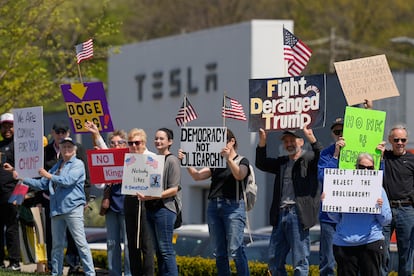
His time at the White House left behind a trail of public and private conflicts with members of Trump’s Cabinet, along with four months of unforgettable images — unthinkable before his foray into politics — making his tenure one of the most extravagant in U.S. history. There was the time he appeared in the Oval Office with his four-year-old son; when Trump turned the White House into a Tesla showroom to support him amid angry consumer backlash; or the iconic image of Musk brandishing a chainsaw, a gift from Argentine President Javier Milei, on stage at the Conservative Political Action Conference — a Trump rally where he was welcomed like a rock star.
That day, he defended his mission leading DOGE, as well as his right to carry it out without giving up “a sense of humor,” which he said was back thanks to Trump. Yet in Washington and beyond, Musk often struggled to get the public to laugh at his jokes.
Musk may hope for “the DOGE mission” to become “a way of life throughout government,” but it’s clear he doesn’t have much faith in that outcome. His definitive farewell came just one day after statements were made public in which he criticized the “big, beautiful bill,” a fiscal initiative being pushed by Republicans in Congress under the pressure of the U.S. president, who has pinned his legislative agenda’s success on its passage. Musk expressed disappointment over the “massive spending” the bill would bring — an amount that the Trump administration itself estimates at over $3 trillion.
Considering that Musk entered the political arena promising to cut $2 trillion from a $6-trillion deficit, the feared effects of this law do little to burnish his record at DOGE. He later lowered his savings target to $1 trillion, but departs having cut only $175 billion — a figure far short of what he promised.
He also leaves having inflicted considerable damage to the reputation of his companies — damage that won’t be easy to repair. Across U.S. highways, a number of Teslas now sport bumper stickers put there by their owners that read: “I bought this before we knew Elon went crazy.” Over the past four months, Tesla dealerships, vehicles, trucks, and charging stations have been targets of vandalism, and the company saw its profits drop by 71% in the first quarter.
Pressure from investors
Those losses tested the patience of Tesla investors, and their mounting pressure was one of the key reasons Musk decided to return to his businesses and stop focusing his energy on Washington — a city he had all but moved to permanently. On Tuesday, Musk posted on X that it was time to get back to his old routine: spending long days and nights in the factories he runs with obsessive dedication, according to his employees.
His time in the “swamp” of Washington — a place he failed to drain and that nearly swallowed him whole — has also sparked lingering suspicions. Namely, that he may have used his unprecedented access to federal secrets to obtain information that could be highly valuable to his private ventures, particularly SpaceX, whose biggest client happens to be the very government he was tasked with downsizing.
This has also been the week in which his flagship project at the space company suffered yet another blow: the third consecutive failure this year of the test launch of the Starship megarocket — the largest ever built and the one he hopes will one day carry humanity to Mars, another promise he made during Trump’s inauguration, the same day he gave a Nazi-style salute. Unsurprisingly, it’s a promise he hasn’t been able to fulfill. This time, the rocket didn’t explode shortly after takeoff, as it had on previous occasions — but it did disintegrate on its way to outer space.
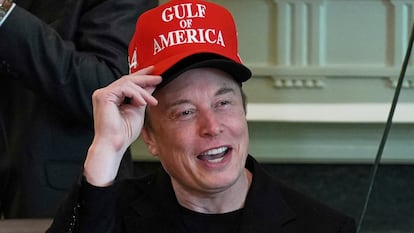
In the past month, according to several U.S. media outlets, Musk has also tasted the bitter lesson often learned by those who get too close to Trump — only to fall out of favor. Though both men insist their friendship remains intact, it’s clear that the honeymoon phase of their relationship has ended.
That initial infatuation began when Musk backed Trump’s campaign with a record-breaking donation of over $260 million. But it seems to have soured, as evidenced during the president’s recent trip to the Middle East, according to The New York Times. While Trump and his family were busy closing lucrative deals, largely ignoring inconvenient ethical questions, Musk had to wait in line to greet him — something unimaginable just a few weeks ago.
A cartoon in The New Yorker on Thursday was even more unkind. It depicted a dreary office scene in a Washington building, with the city’s iconic obelisk visible in the background. On a table sat a lonely soda and a bag of chips. A sign reads: “Bye, Elon.” One character says: “We’re sorry, but the goodbye-party budget was gutted by DOGE.”
Sign up for our weekly newsletter to get more English-language news coverage from EL PAÍS USA Edition
Tu suscripción se está usando en otro dispositivo
¿Quieres añadir otro usuario a tu suscripción?
Si continúas leyendo en este dispositivo, no se podrá leer en el otro.
FlechaTu suscripción se está usando en otro dispositivo y solo puedes acceder a EL PAÍS desde un dispositivo a la vez.
Si quieres compartir tu cuenta, cambia tu suscripción a la modalidad Premium, así podrás añadir otro usuario. Cada uno accederá con su propia cuenta de email, lo que os permitirá personalizar vuestra experiencia en EL PAÍS.
¿Tienes una suscripción de empresa? Accede aquí para contratar más cuentas.
En el caso de no saber quién está usando tu cuenta, te recomendamos cambiar tu contraseña aquí.
Si decides continuar compartiendo tu cuenta, este mensaje se mostrará en tu dispositivo y en el de la otra persona que está usando tu cuenta de forma indefinida, afectando a tu experiencia de lectura. Puedes consultar aquí los términos y condiciones de la suscripción digital.
More information
Archived In
Últimas noticias
Welcome to the post-religion era: The idea of Christianity as the absolute truth has become obsolete
‘I thought you would like it’: The risky sexual practice popularized by TV shows and TikTok
The digitalization of tourism: ‘They promise experiences and gave us the worst possible one’
Mexican peso defies uncertainty with forecasts of a new period of stability in 2026
Most viewed
- Sinaloa Cartel war is taking its toll on Los Chapitos
- Reinhard Genzel, Nobel laureate in physics: ‘One-minute videos will never give you the truth’
- Oona Chaplin: ‘I told James Cameron that I was living in a treehouse and starting a permaculture project with a friend’
- Why the price of coffee has skyrocketed: from Brazilian plantations to specialty coffee houses
- Silver prices are going crazy: This is what’s fueling the rally
























